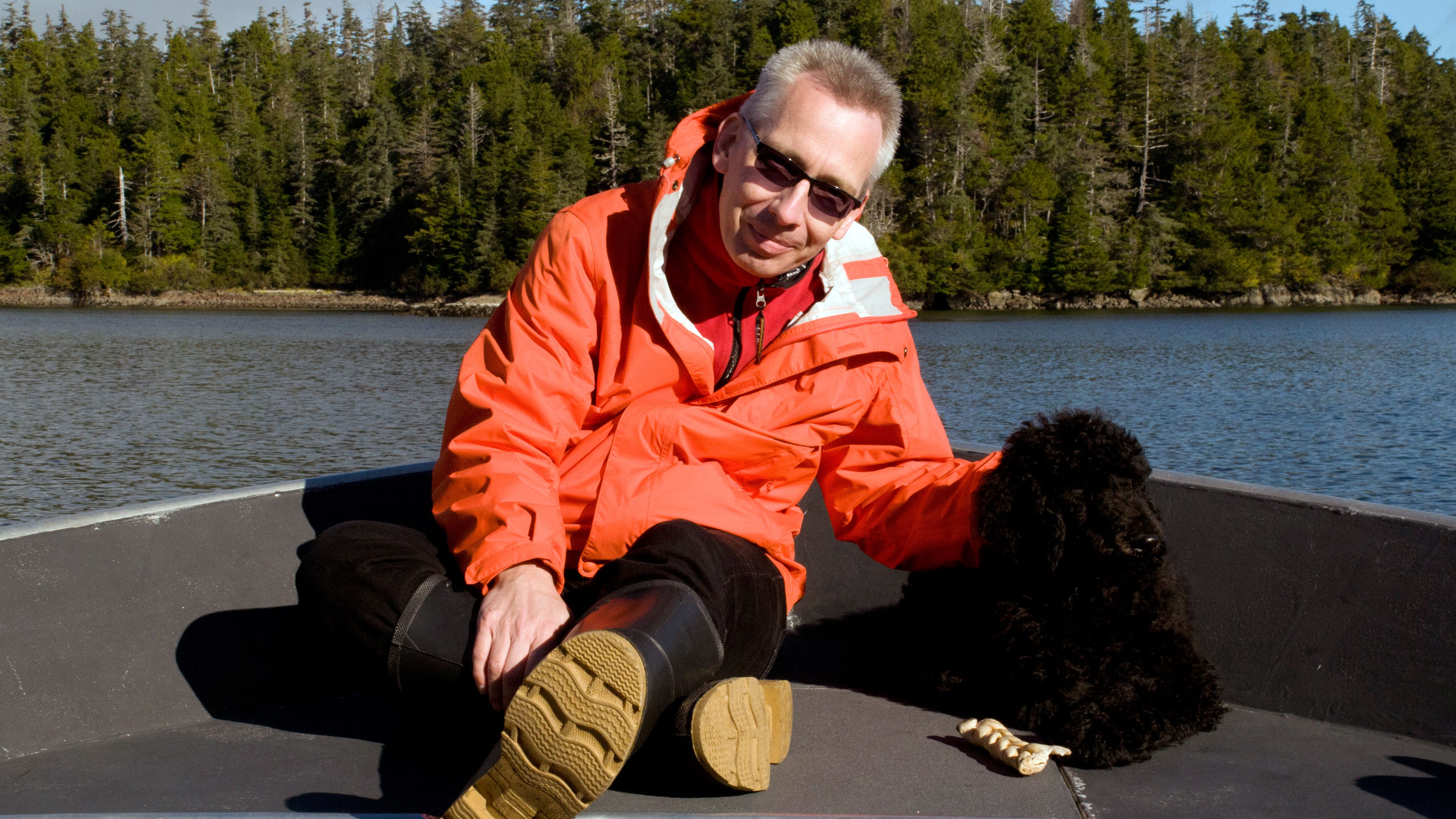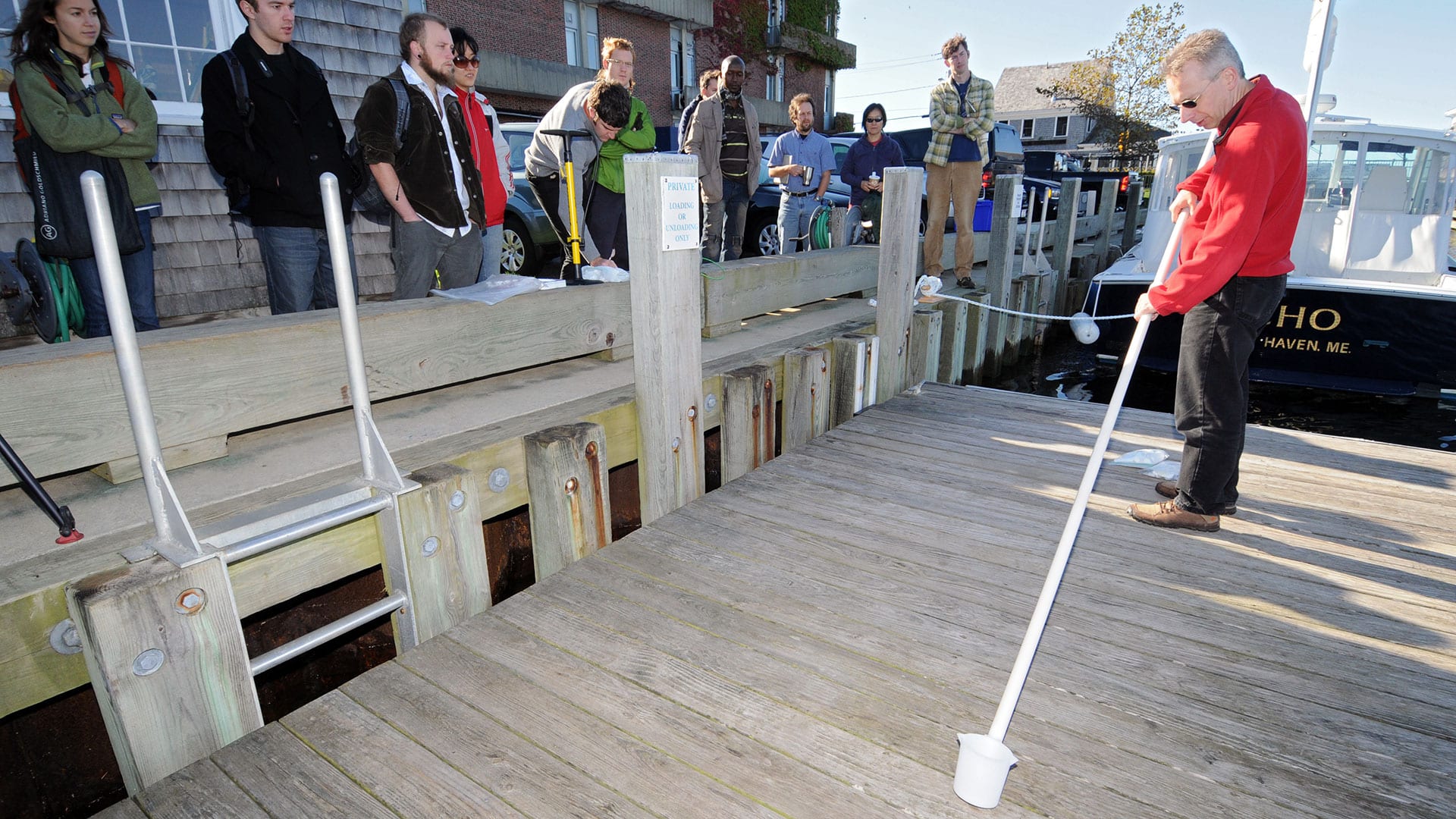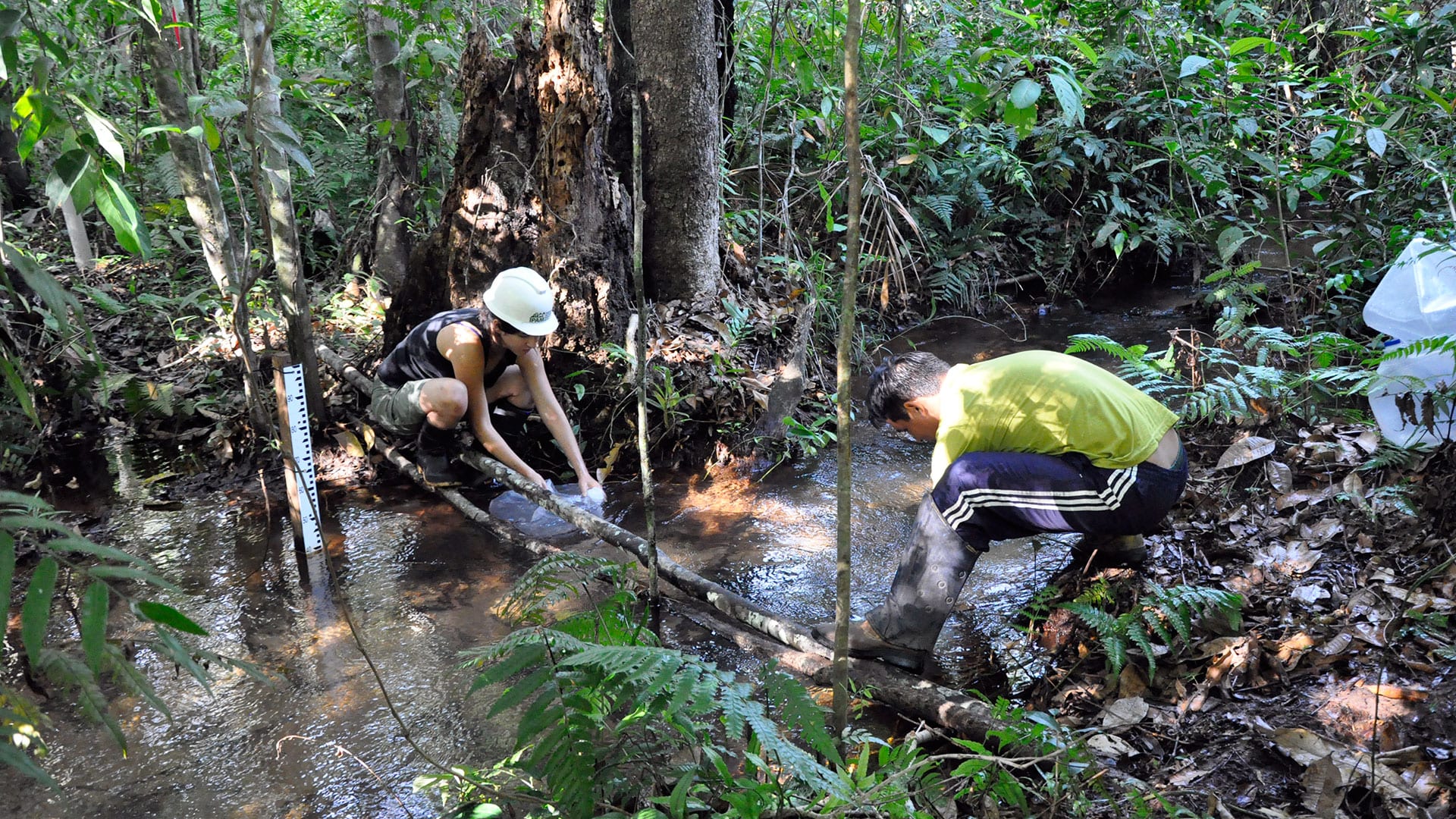River Detective: WHOI scientist studies river chemistry around the world
A conversation with Bernhard Peucker-Ehrenbrink
By Evan Lubofsky | October 2, 2019

Rivers are key to understanding the chemical evolution of seawater. Bernhard Peucker-Ehrenbrink, a marine chemist and chair of WHOI’s Marine Chemistry & Geochemistry department, has been studying rivers around the world as part of the Global Rivers Observatory network to observe how natural and human-caused environmental changes affect the composition of river water over time.
This week, Peucker-Ehrenbrink and an international team of experts and guests will travel to the Brazilian rainforest along the largest river on the Earth—the Amazon River—to get a closer look at the history of its waters and assess how it may change in the future.
Why are you particularly interested in studying the Amazon?
BPE: The Amazon is home to some of the world’s most diverse ecosystems, but it’s been heavily impacted by climate change, deforestation, and other disturbances—many of which we’re responsible for. These disturbances can have significant impacts on the chemistry of the river and land-ocean linkages. So, that all comes with a responsibility of keeping a record of what’s happening in the environment and how the landscape is impacting rivers over the long term. That’s the main thing we’re after.
During our last trip to the Amazon in 2014, we focused on the Amazon proper coming out of the Andes Mountains, but this time, we’re going to focus entirely on the Rio Negro, one of the ten largest rivers in terms of discharge. We’re going to travel upstream to areas that are less explored than Andean territories and areas that aren’t frequently visited by tourist boats.

WHOI scientist Bernhard Peucker-Ehrenbrink demonstrates how to sample river water for participants in the Global Rivers Observatory project. The project addresses the flow of water, sediments, and nutrients into the oceans from major river basins worldwide. (Photo by Jayne Doucette, Woods Hole Oceanographic Institution)
How do you approach the long-term recordkeeping of river water?
BPE: We do both water monitoring and sampling in the Amazon and other rivers we travel to. For monitoring, we use multi-parameter instruments that allow us to measure temperature, conductivity, dissolved oxygen, and turbidity every 30 minutes around the clock. We simply hang these over the side of the boat and leave them in the water to get a sense of the daily fluctuations in the river.
Water sampling gives us an opportunity to engage our nonscientist guests during these expeditions. When we went to the Columbia River in 2017, we took the group out on a small boat, collected river water in a bucket, and let all the participants take samples from the same bucket using low-cost sampling kits. These are very simple devices and all mechanical, so no electrical power is required. You simply draw river water up in a plastic syringe, affix a small cartridge filter to the end of it, and then filter the water into a small bottle. It’s so simple that school kids can do it.
What kind of information do the samples provide?
We can get the isotopic composition of the water molecules themselves, which give us clues about where the water is coming from. Typically, in the tropics, the river water is relatively “heavy” in terms of its composition, unlike the water we see in higher latitudes, which is lighter. So, we get a better sense of the water’s history and what processes it has undergone over time.
The samples also allow us to better understand the variability in the water’s chemical makeup from various locations within an area of the river. For example, our guests may take a sample in one spot, and then another 100 meters away. We can compare the chemical signatures of both and determine if the river is well mixed, or if it looks like chemical patchwork.

Participants in a previous expedition to the Amazon River collect water samples. The samples provide a better understanding of the water’s history, what processes it has undergone, and variability in its chemical makeup from various points along the river. (Photo courtesy of Sarah Rosengard)
This year, the number of rainforest fires in the Amazon surged to more than 150,000—the most since 2010. Will these environmental disturbances be detectable in your river samples?
Fortunately, the areas we’re travelling to are relatively pristine and are among the least affected by these fires. However, there could be soot from the fires raining down on the landscape and exported by the river downstream. We’ll have plenty of samples, so if we can get the right research permits to analyze what we want, we can look for specific organic compounds that are indicative of fire.
This is just one more example of how rivers have this fantastic property of integrating signals from the landscape. It’s one data point, but it can help us build out more of a record of the changing environment there. And the more we can extend these records, the more we can separate out naturally occurring changes in the river from those that are human-caused.
